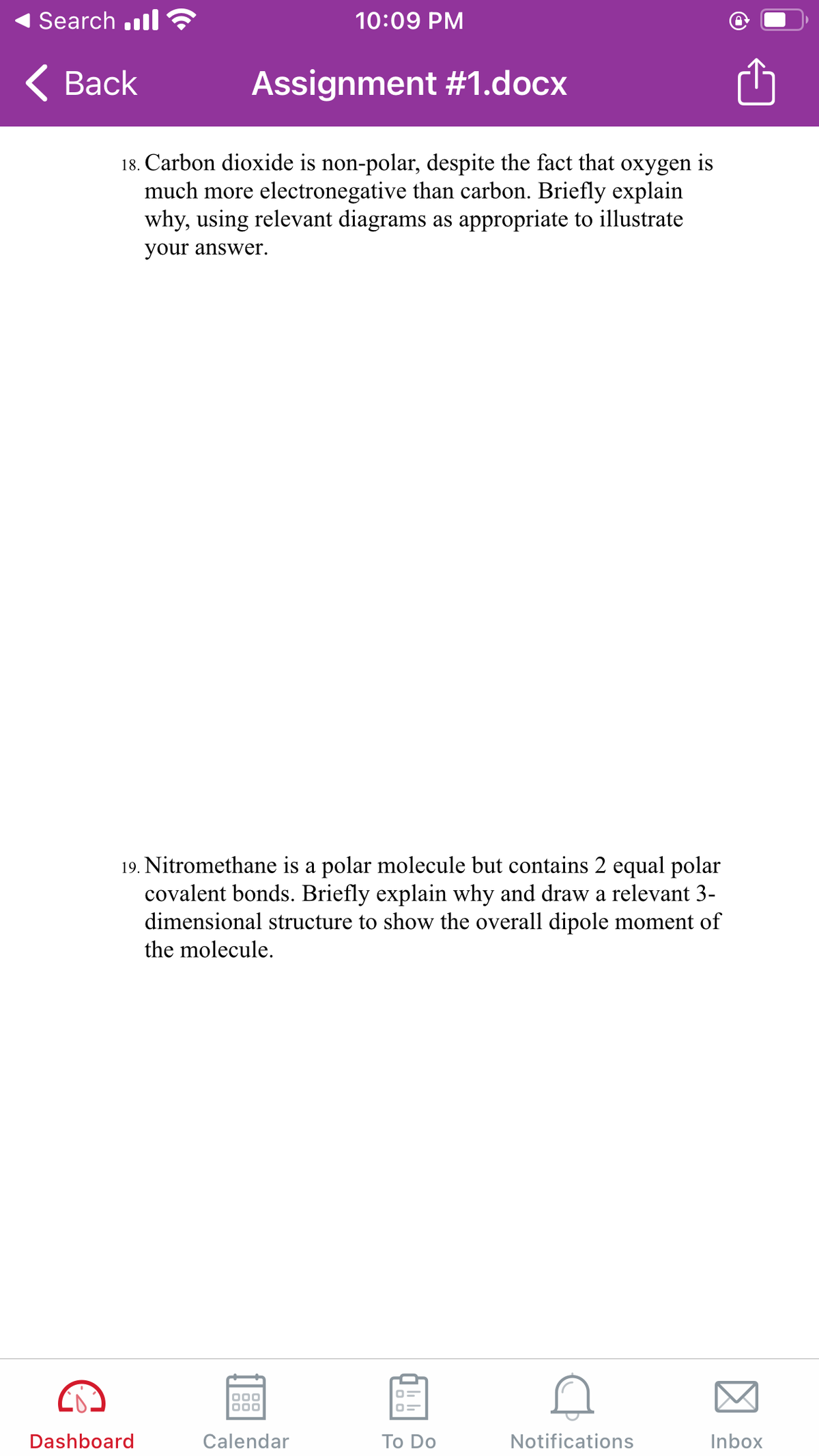18. Carbon dioxide is non-polar, despite the fact that oxygen is much more electronegative than carbon. Briefly explain why, using relevant diagrams as appropriate to illustrate your answer.
18. Carbon dioxide is non-polar, despite the fact that oxygen is much more electronegative than carbon. Briefly explain why, using relevant diagrams as appropriate to illustrate your answer.
Organic Chemistry: A Guided Inquiry
2nd Edition
ISBN:9780618974122
Author:Andrei Straumanis
Publisher:Andrei Straumanis
Chapter4: Polar Bonds, Polar Reactions
Section: Chapter Questions
Problem 10CTQ
Related questions
Question
18 please

Transcribed Image Text:Search .ll
10:09 PM
< Вack
Assignment #1.docx
18. Carbon dioxide is non-polar, despite the fact that oxygen is
much more electronegative than carbon. Briefly explain
why, using relevant diagrams as appropriate to illustrate
your answer.
19. Nitromethane is a polar molecule but contains 2 equal polar
covalent bonds. Briefly explain why and draw a relevant 3-
dimensional structure to show the overall dipole moment of
the molecule.
Dashboard
Calendar
Тo Do
Notifications
Inbox
Expert Solution
This question has been solved!
Explore an expertly crafted, step-by-step solution for a thorough understanding of key concepts.
This is a popular solution!
Trending now
This is a popular solution!
Step by step
Solved in 2 steps with 2 images

Knowledge Booster
Learn more about
Need a deep-dive on the concept behind this application? Look no further. Learn more about this topic, chemistry and related others by exploring similar questions and additional content below.Recommended textbooks for you

Organic Chemistry: A Guided Inquiry
Chemistry
ISBN:
9780618974122
Author:
Andrei Straumanis
Publisher:
Cengage Learning

Organic Chemistry: A Guided Inquiry
Chemistry
ISBN:
9780618974122
Author:
Andrei Straumanis
Publisher:
Cengage Learning